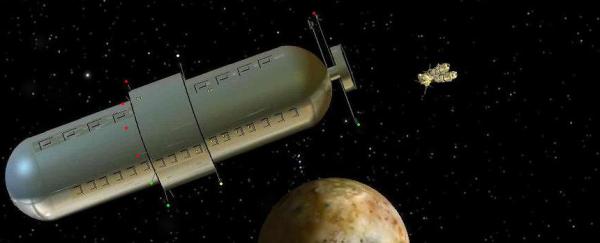BY LETTER
Io (Sol V-i)
The innermost Galilean moon of Jupiter in Solsys | |
 Image from Steve Bowers | |
| Gardenio Cylinder, a former Jovian League habitat orbiting Io | |
| Type | Ionian (EuHephaestian) Subtype |
|---|---|
| Primary, Position | Jupiter, v (all)/i (Galilean only) |
| Primary, Distance from | 421,600 km |
| Satellites | none |
| Diameter | 3,630 km |
| Gravity | 0.183 G |
| Length of day | 1.769 days (tidally locked) |
| Atmosphere | mostly sulphur dioxide |
| Surface Temperature | -143° C (average) |
| Surface Composition | Silicates, sulphur, sulphur dioxide |
| Discovery | Jan 8, 1610 AD, by Galileo Galilei |
| Administration | Solar Organisation territory |
| Government | Solar Organisation direct administration territory |
| Industries | Scientific research, tourism, extreme sports, simmimersion, waldoing. |
| Sophonts | Currently no permanent presence on the surface. About 250,000 scientists, artisans, and tourism workers in the four orbitals. Species: near-baseline superior, cyborg, vec, baseline, and ai in subequal proportions. |
| Planetology | Holotype for Ionian Subtype of world. This moon, a body larger than Luna, is unlike any other object in Sol System, although a fairly common type in the right celestial environment. Volcanoes, lava-flows and lakes of bright orange molten sulphur dominate the surface of Io. There are extensive regions frosted with sulphur dioxide snow. |
| History and Comments | A few of the old automated mines and research centres are carefully preserved as historical exhibits. Io's orbit lies deep within Jupiter's radiation belts, making it inimical to unshielded life, and it is a popular center for extreme sports. Much of the moon's energy is supplied by the Io flux tube. |
Related Articles
Appears in Topics
Development Notes
Text by M. Alan Kazlev
Initially published on 10 November 2001.
Initially published on 10 November 2001.






